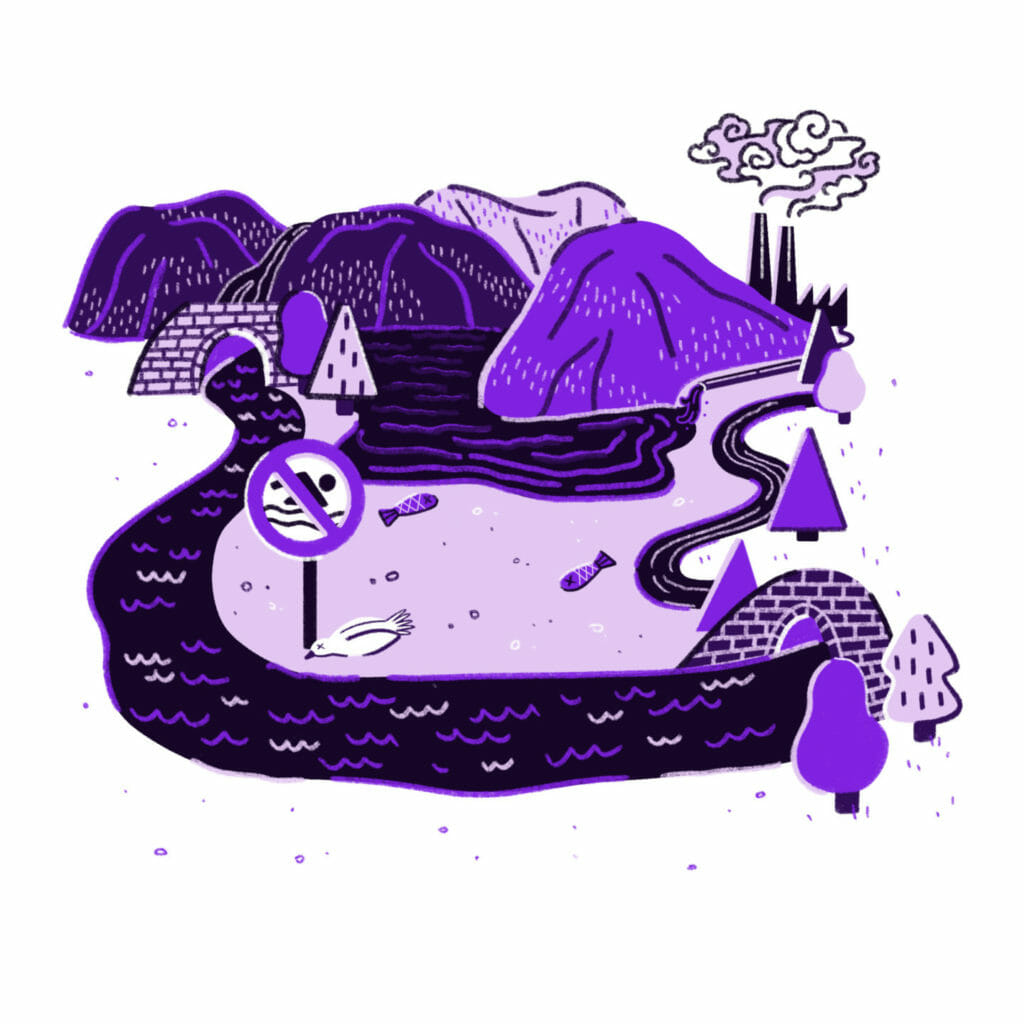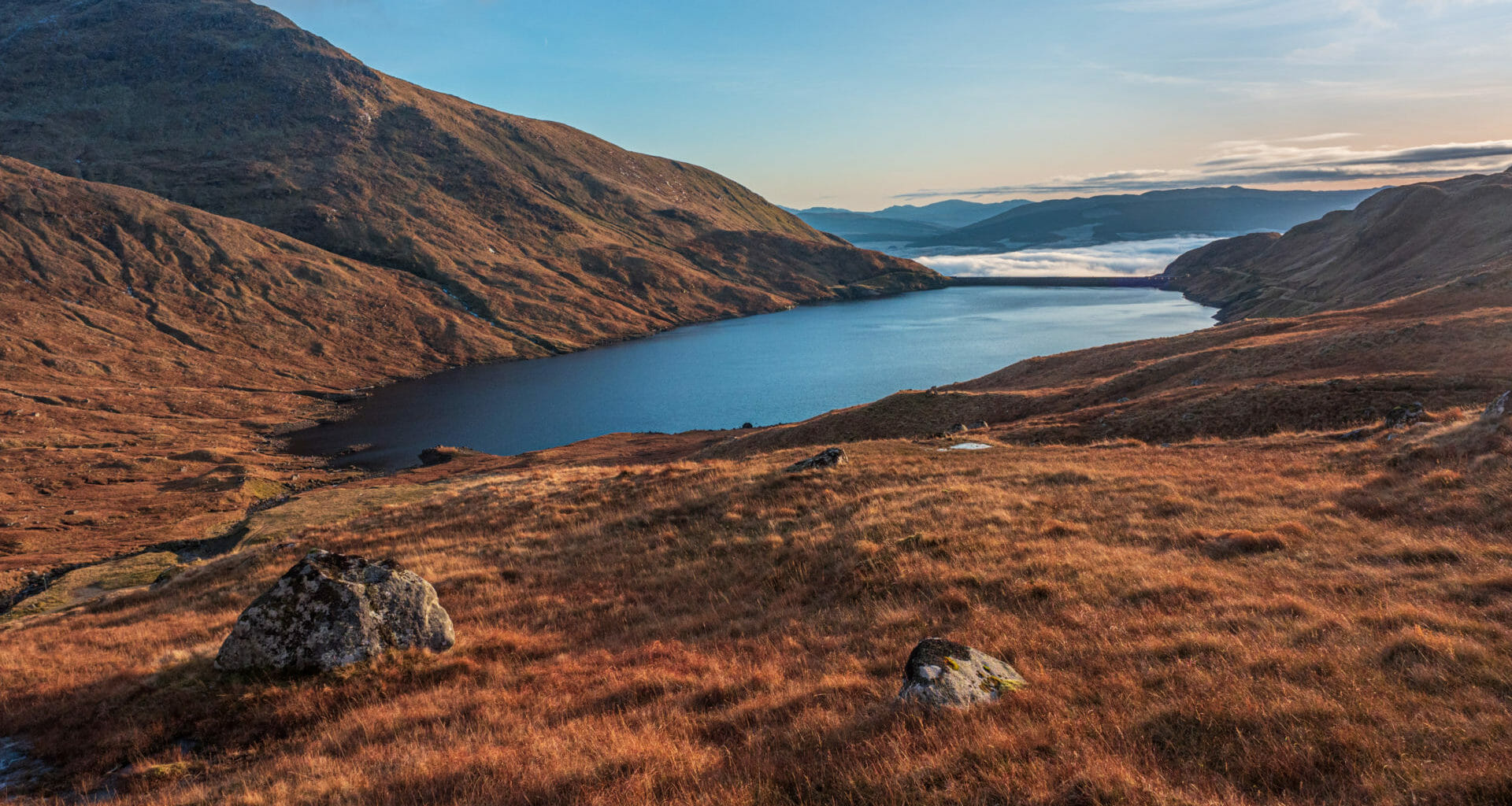
Scotland’s rivers, lochs, canals and burns are in the worst state on record, with more than 400 damaged by water pollution and other problems, according to the latest official analysis.
New assessment methods used by the Scottish Environment Protection Agency (Sepa) have more than doubled the number of waterways classified as “bad” between 2018 and 2019. There are “significant environmental problems caused by a number of pressures,” Sepa said.
Amongst the many rivers rated as either bad or poor by Sepa are some of Scotland’s most well-known. They include long stretches of the Almond, Carron, Dee, Don, Earn, Esk, Kelvin, Lossie, Nairn, Nith, Spey, Tay, Tummel, and Water of Leith.
The “ecological status” of many of the country’s iconic lochs were also bad or poor, including Loch Awe, Loch Doon, Loch Drunkie, Loch Katrine and Loch Leven. Ecology is one of many factors Sepa uses to assess a water body’s overall status.
Sepa says water bodies are classified by how much their condition differs from near natural conditions. For example, the status of water bodies in a near natural condition is deemed to be “high”, while those with “severely damaged” conditions are considered to be “bad”.
Campaigners said the pollution of Scotland rivers and lochs was “unacceptable” and demanded an environmental watchdog “with teeth”. Globally freshwater species were going extinct more rapidly than other types of species, they stressed.

Illustrated by Jagoda Sadowska.
The picture wasn’t “pretty”, and could be made worse by climate change, claimed experts.
Ecological threats stem from issues like agricultural, sewage and industrial pollution. Sepa said the apparent deterioration in water ecology between 2018 and 2019 was due to better assessment of how changes to beds, banks and shores impact water ecosystems.
Previous data was mostly recorded from maps, but using new data gained from surveying waters between 2014 and 2018 has improved Sepa’s understanding of these factors.
“These results were incorporated into the classifications for the first time in 2019 and are responsible for the increase in ‘poor’ or ‘bad’ status assessments,” a spokesperson said.
The number of water bodies awarded a “bad” overall ecology status rose from 187 in 2018 to 410 in 2019 – the highest on record – after Sepa applied its new assessment methods.
Sepa’s new assessment system contributed to the ecological status of 441 water bodies being downgraded. The ecological status of just 101 water bodies were upgraded.
Parts of the River Almond are among those to have their status downgraded in the latest surveys, with two demoted from "poor" to "bad" and one changed from "good" to "poor" between 2018 and 2019.
The Ferret revealed in April that sewage was discharged into the West Lothian river 500 times in 2019 alone. While untreated sewage can harm aquatic organisms like fish and insects, it is unclear whether Sepa’s recent ecological downgrades are related to sewage leaks.
Dr Pippa Scott is a local resident and member of the River Almond Action Group, which campaigns against the leaks.
She said: “The issue of sewage and sewage related debris is a far reaching problem in Scotland and the wider UK, that the Almond is all too sadly demonstrating, with riverbanks and riverbeds strewn with sewage related debris and poor water quality known to be caused by sewage overflows.
“This is unacceptable to Scottish communities in the 21st century. It is great to see a growing interest in the issue and we look forward to continuing to work with all river stakeholders towards a healthier, cleaner and hopefully swimmable river Almond.”
‘New understanding’ of Scotland’s waters
The University of Stirling’s Professor Nigel Willby, a water ecology expert, emphasised the extent to which “morphological pressures” – changes to the surrounding land, such as erosion – can impact on water ecosystems.
“We have a decent understanding for the first time of the scale of impacts of morphological pressures on Scotland’s waters and, not surprisingly, the results aren’t that pretty,” he told The Ferret.
Streams flow into rivers and lochs, and eventually flow into the sea, so small pressures can collectively build up into serious threats to biodiversity. To ensure that water bodies are healthy and support a range of life, it’s important to manage them collectively.
Dougie Peedle, Scottish Wildlife Trust
Scotland’s water bodies have been impacted by changing beds, banks and shores “due to water level regulation for many decades, in some cases dating back to the 1950s or even much earlier”.
While minor changes in a water body can already see Sepa change its ecological status in a year, its new assessment methods mean comparing the 2018 and 2019 data is difficult as Willby claims it is “not like for like”.
This new understanding may have resulted in the ecological status of some water bodies being downgraded, despite other parts of their ecosystems being “largely in reasonable shape”, he said.
The Scottish Wildlife Trust warned that “globally, freshwater species which rely on healthy river systems are going extinct more rapidly than terrestrial or marine species.”
“To tackle this, we need to see a joined-up approach that addresses all the drivers that are placing water bodies in poor ecological condition,” said Dougie Peedle, the trust’s head of policy.
The key pressures on water bodies include agricultural, forestry and other pollution as well as invasive non-native species and habitat loss, he added.
“Streams flow into rivers and lochs, and eventually flow into the sea, so small pressures can collectively build up into serious threats to biodiversity. To ensure that water bodies are healthy and support a range of life, it’s important to manage them collectively.”
The trust’s Riverwoods initiative aims to create a country-wide network of healthy rivers and woodlands adjoined to waterways.
“This will deliver benefits including flood protection, improved water quality and improvements for salmon fisheries, as well as helping to tackle the interlinked challenges of climate change and biodiversity loss,” added Peedle.
According to National Geographic, freshwater ecosystems naturally share resources between habitats. For example, ecosystems in rivers and burns bring salts and nutrients from the mountains down to lochs, wetlands and eventually, seas.
Similarly, migrating species, like Atlantic Salmon, bring ocean nutrients to upstream river ecosystems.
The Salmon & Trout Conservation Scotland said the new data showed that Sepa should be spending much more time ensuring that the source of pollution is “tackled head-on”.
“The original role of Sepa – to protect the environment – has been muddied over the years by giving it duties to promote economic growth,” said the group’s Guy Linley-Adams.
“The drift towards too cosy a co-existence with the industries it is supposed to regulate – publishing glossy ‘sustainable growth agreements’ – is worrying.”
He added: “Only if we have a proper environmental watchdog with teeth – one that is not afraid to bite when it needs to – will this negative trend in ecological status start to improve.”
Improving water ecology means ‘redoubling our efforts’
Fisheries Management Scotland (FMS) warned that Scotland’s “native fish species need free access to cold, clean water.” “If wild salmon are to be safeguarded, action is needed at significantly more pace and scale,” said Dr Alan Wells, chief executive.
“This includes redoubling our efforts to ensure improvement of the ecological status of our rivers.”
FMS was working with Sepa “to address barriers to fish migration and deliver improved water quality and quantity in our rivers, through stopping pollution from agricultural run-off and sewage, tackling over-abstraction and ensuring better management of river flows,” said Wells.“Scotland’s rivers and the important species that rely on them, deserve no less.”
A hydrology expert from a Scottish university, who asked not to be named, highlighted that some lochs are more akin to reservoirs than natural lochs and do not have similar ecosystems.
For example, lochs Ericht, Garry and Tummel are used for hydropower, while Loch Katrine and others are used for water supply.
As well as changes to beds, banks and shores, ecological issues are caused by pollution from fertilisers and pesticides used in agriculture, waste water, sewage and industrial waste, as well as historical mining activity, he highlighted.
This means that rivers like the Dee and Tay with good ecology in most parts are impacted by pollution flowing in from smaller rivers and burns. Scotland experienced a prolonged drought in 2017 and 2018, and drought issues may have affected water ecology in 2019, he said.
This could have led to water quality issues like high temperatures and lower oxygen levels, and resulted in “ecological consequences, especially to cold water species common in Scotland’s rivers”.
The hydrologist added: “These conditions are likely to occur more frequently with climate change.”
A Sepa spokesperson said: “Most of Scotland’s water environment is already in a good condition and subject to fewer pressures than most other European waters.
“However, there are significant environmental problems caused by a number of pressures, including diffuse and point source pollution, alterations to beds, banks and shores, alterations to water levels and flows and the presence of invasive non-native species.”
The results of Sepa’s assessments “can be used to set objectives for improving the water environment through river basin management planning”.
In December 2020, Sepa published the consultations for its Draft River Basin Management Plan 2021-2027, which ran until June 2021. The feedback is informing the development of the final plans, due to be published in December 2021, added the spokesperson.
How Green is Scotland? is a week-long series for The Herald by The Ferret, an award-winning investigative journalism platform in Scotland. It is an editorially independent, not for profit co-operative run by its journalists and members.
You can join for £3 a month.
Photo Credit: iStock/Munro1














